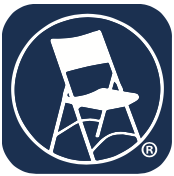
 This is the first installment of a new Box 4-5-9 series on the technology that is changing the way Alcoholics Anonymous communicates to suffering alcoholics and interacts with its members.
This is the first installment of a new Box 4-5-9 series on the technology that is changing the way Alcoholics Anonymous communicates to suffering alcoholics and interacts with its members.
Josh R., a web developer, did most of his drinking in New York City. In 2013, he decided a geographic would help and he moved to San Jose. Unlike most geographics, this one turned out to be fruitful — for both Josh and for Alcoholics Anonymous.
Once in San Jose, Josh got sober, found a sponsor and started going to A.A. meetings in the area. Only problem was, the local central office website — while it listed meetings — wasn’t so user-friendly for someone using a mobile phone. Like most A.A. websites, the site had been developed before mobile design came into general use. Such sites work fine for someone on a computer, but these days, A.A. sites get more than twice as many visitors from handheld devices as from traditional desktops or laptops.
“Essentially what I did,” Josh says, “is take all the meet- ing listings and export them to an Excel file with links to directions, and then made my own little app, just for myself. That’s where the germ of the idea for the Meeting Guide app developed — just me trying to find meetings.”
From early sobriety, Josh has been a supporter of intergroups and central offices. The intergroup rep from his home group suggested that Josh develop his person- al app into an app that all A.A.s in Santa Clara County could use. Josh agreed and conferred with the Santa Clara County central office.
Eventually, Josh went further than originally envisioned. He came up with the idea to develop a WordPress plug-in that intergroup/central offices, areas and districts across the country (and the world) could use, so that the meetings they listed on their sites could be added to the app and automatically updated every 12 hours.
A turning point for Josh was making a presentation of his app to the National A.A. Technology Workshop (NAATW), where he received support and feedback. The free app was launched in November 2015 with seven connected A.A. websites — those in Austin, Mesa (Arizona), Oakland, Philadelphia, Portland (Oregon), San Francisco and San Jose.
Today, Meeting Guide is connected to 326 local A.A. organization websites. Getting connected wasn’t easy for all of them. Some local sites had to find new web servants, while others had to draft new policies and procedures, sign up for new web hosting, and try new soft- ware. In several cases, group consciences were sought to settle concerns about the Sixth Tradition and the future of the app: Would it always be free? Does this represent affiliation with an outside entity?
In an era when smartphones dominate, Meeting Guide is a simple, useful tool for newcomers and oldtimers alike — one that standardizes meeting information so that it is always readily available and up to date. Recognizing this, Josh did something unusual, but which is also completely within the spirit of the Fellowship: he gave the Meeting Guide app to Alcoholics Anonymous, for free.
“I realized,” Josh says, “that the only way we could continue to grow was to pass it on.”
In the fall of 2018, A.A.W.S., Inc. licensed Meeting Guide and put together a working group of consultants, employees and trustees to help bring it to fruition, and an updated version was released in summer 2019. Lois L. is a member of the steering committee for the NAATW and an administrator on the Technology in A.A. (TIAA) online forum. As an A.A. member with 30 years sobriety and a professional digital strategist and user experience (UX) consultant, she also advises G.S.O. on digital matters and technical strategy. She says, “What A.A.W.S. has done by acquiring and updating the app is to enable this vital piece of technology to live on forever, to be continually updated and improved upon. Providing the app is what G.S.O. is supposed to do — which is to disseminate public information on a national level for all A.A.s. It’s also important to point out that, although the app is provided to the end user for free, it costs money and time to maintain and update — money that comes from member donations to intergroup/central offices and G.S.O. itself.”
“Meeting Guide has multiple benefits,” says Clement C., staff member on the Communication Services desk at the General Service Office. “Professionals
such as therapists and probation officers are able to use it to steer people to meetings very easily. Anytime anyone is traveling, they find the app extremely useful. One aspect I love is being able to text my favorite meetings to sponsees and to give them all the information they need to find them.”
Developed for iOS and Android, Meeting Guide is easily recognizable on G.S.O.’s website by its logo, a white fold- ing chair on a blue background. The app clearly tells the user the name and address of a particular meeting, the time it is being held, how far it is from the user’s current location, and what type of meeting it is. There are almost 110,000 meetings currently available on the app, and it currently has 186,000 monthly active users, increased from 84,000 in 2018.
“Meeting Guide is completely aligned with A.A. and was designed with a full understanding of our Traditions and Concepts,” says Beau B., a Class B (alcoholic) general service trustee and a director on the A.A.W.S. board. “It’s a great example of the right use of new technology: not walking away from who we are as a Fellowship, while allowing us to do so much more.”
Clement C. agrees, and also sees another benefit of Meeting Guide: “Having licensed the app, G.S.O. is now seeking to collaborate with intergroup/central offices — the places where the meeting information resides, after all — to keep it fully updated and make sure it continues to be a vital Twelfth Step tool. It’s a true program- wide effort.”
“I would hope that people are inspired by this and see it as a kind of service model — that you can create some technology on your own and then perhaps give it to the Fellowship,” Josh says. “I hope there are people out there who want to create, for instance, a Twelfth Step volunteer database to get out to groups who might need it. There’s a lot that we can do.”
Beau B. personally feels that A.A. is at a “tipping point” when it comes to the use of technology, of which Meeting Guide is only the first example to come to full fruition. Within a year, G.S.O. will have a new website to replace the 2014 version it currently has, one in which the search function is notoriously balky. The new site, Clement says, will “speak directly to people in a conversational way and make it easier for members and people coming to A.A. for the first time to find what they want.” Julie Gonzalez (nonalcoholic), Communications Services staff assistant, says that A.A. is “trying to do everything with current best practices. We’re listening to industry professionals and user feedback, and participating in the NAATW and Regional Forums.”
If so, it’s somehow fitting that people like Josh R., and those A.A.s who gather at NAATW conferences and online at the TIAA forum, may be the ones whose service at the local level can lead to effectiveness for carrying A.A.’s message to anyone, anywhere, who reaches out, or clicks, for help.
“After five years of attending NAATW conferences,” Lois L. says, “you start to see what people all over are doing and thinking about on their own. Much of what people are doing is experimental. Which is fine. The Traditions and Concepts support that. Let’s try new things, and if they don’t work, we’ll try something else.”
Part Two of this series will continue in the Winter 2019 edition.

